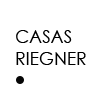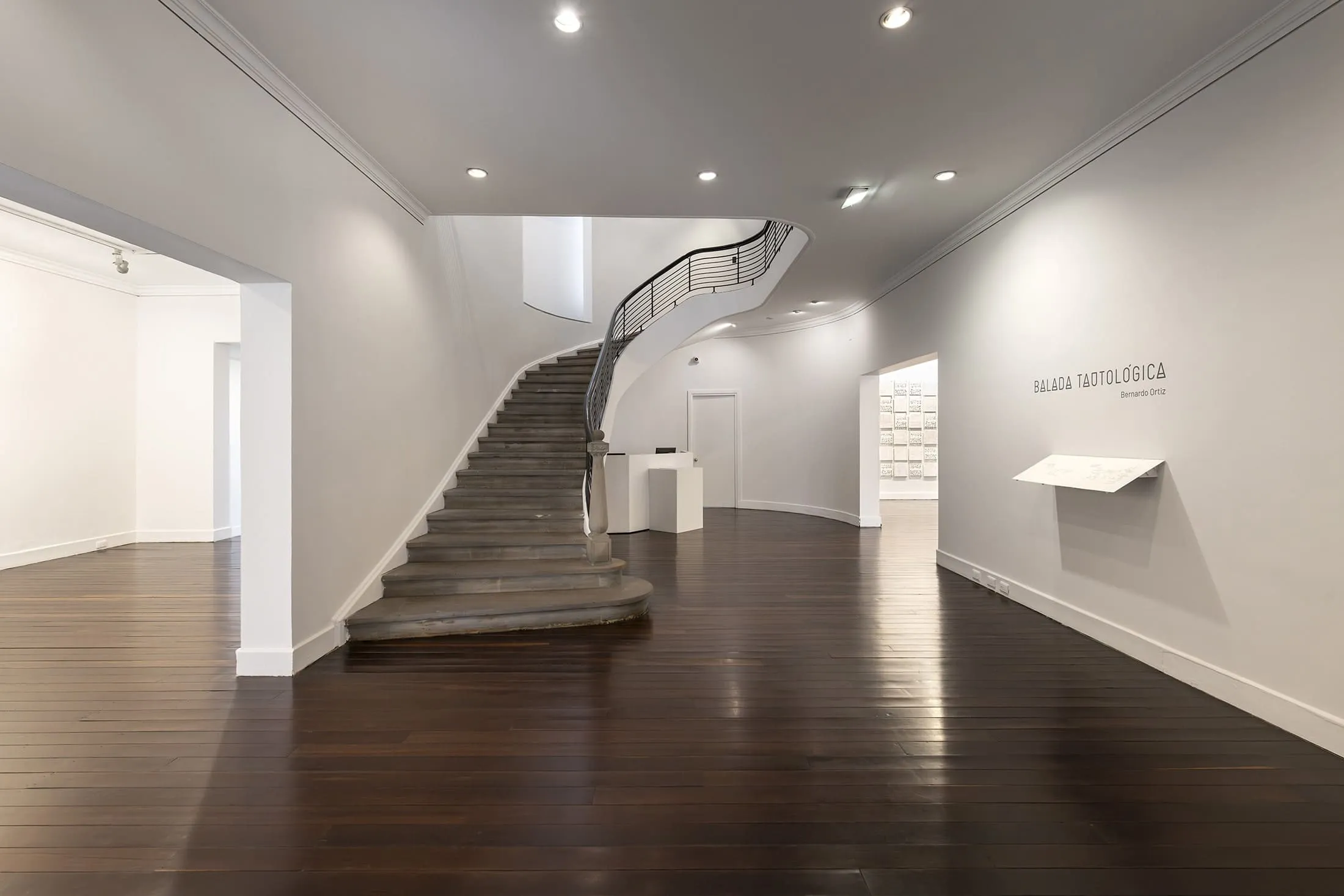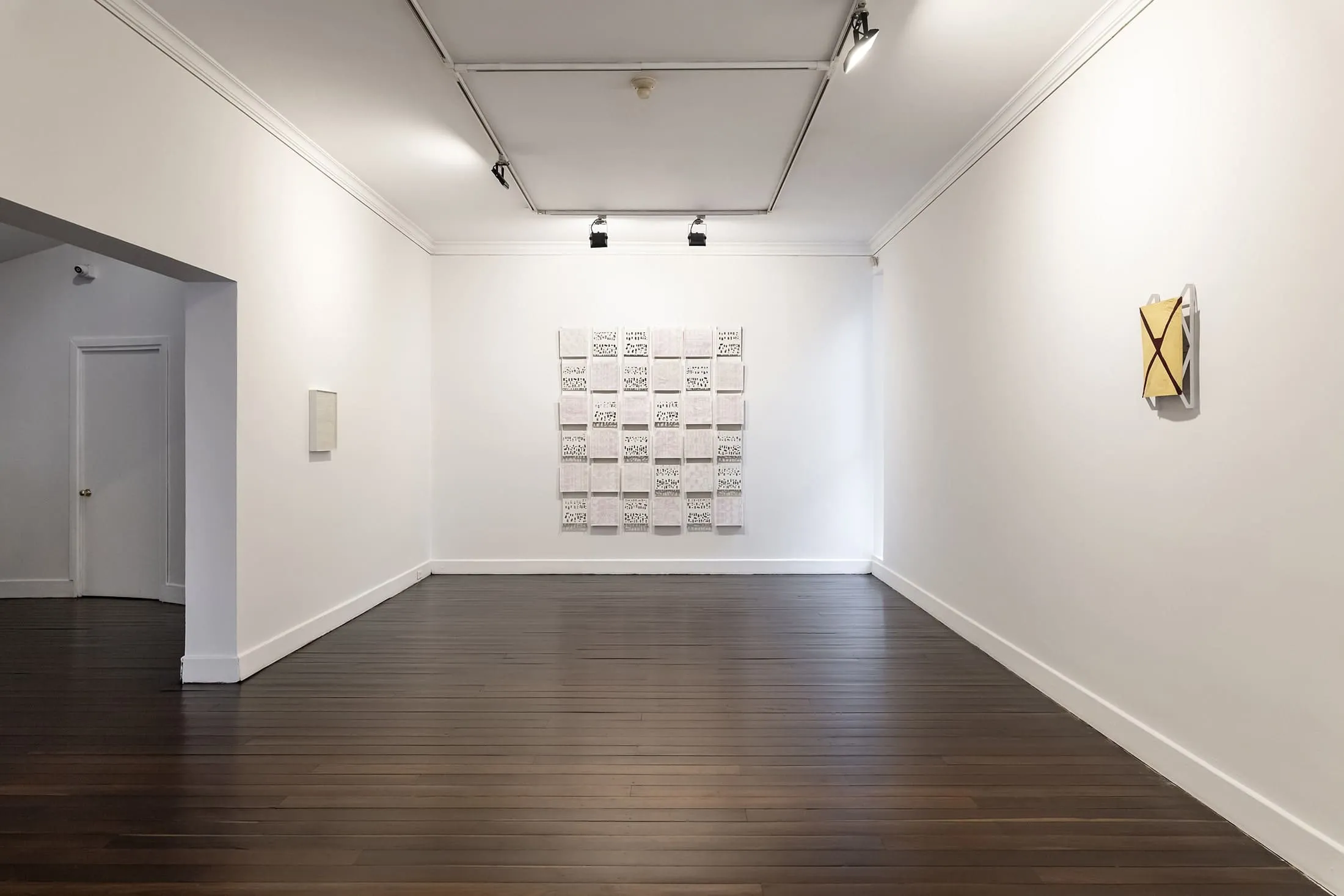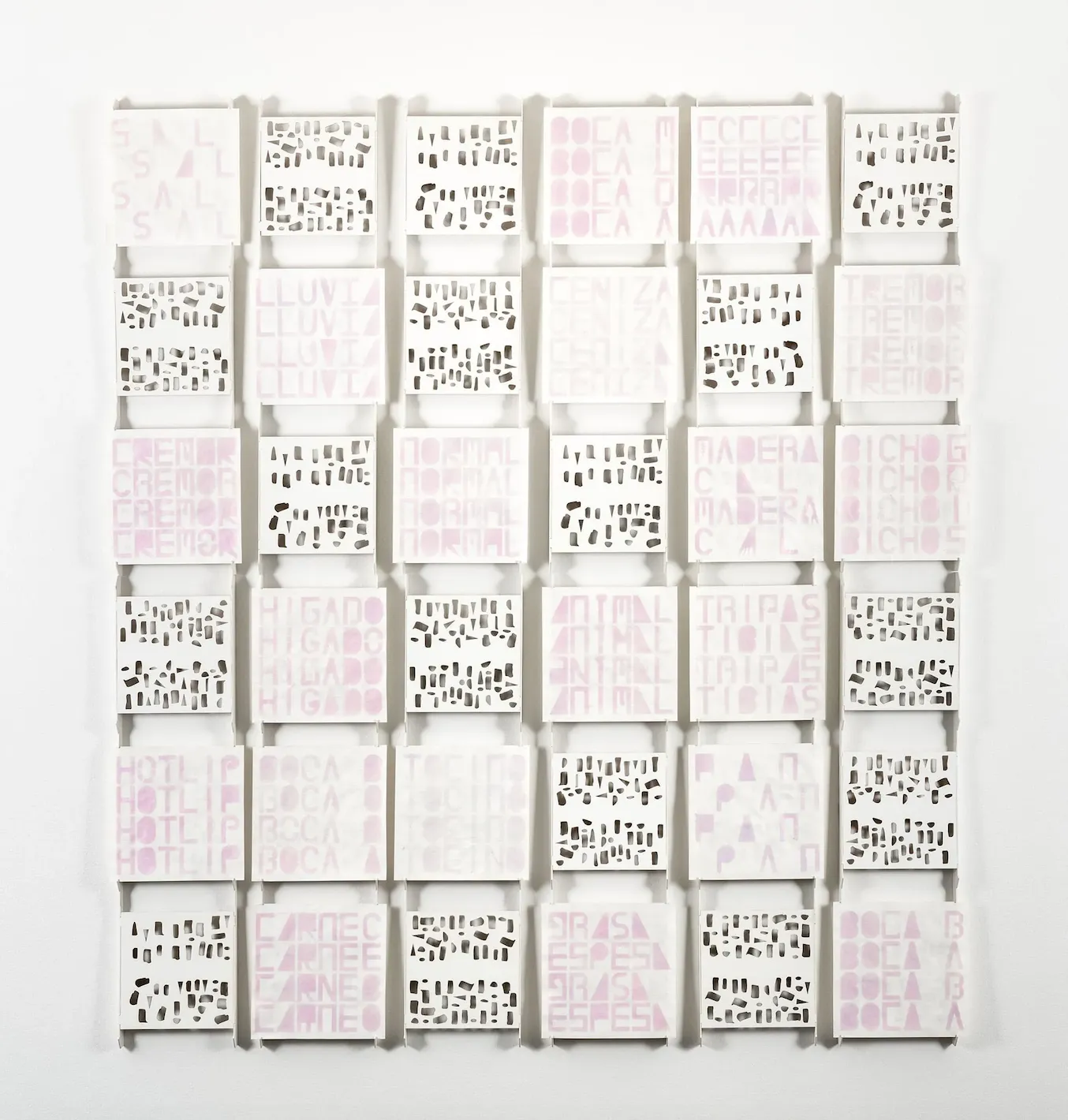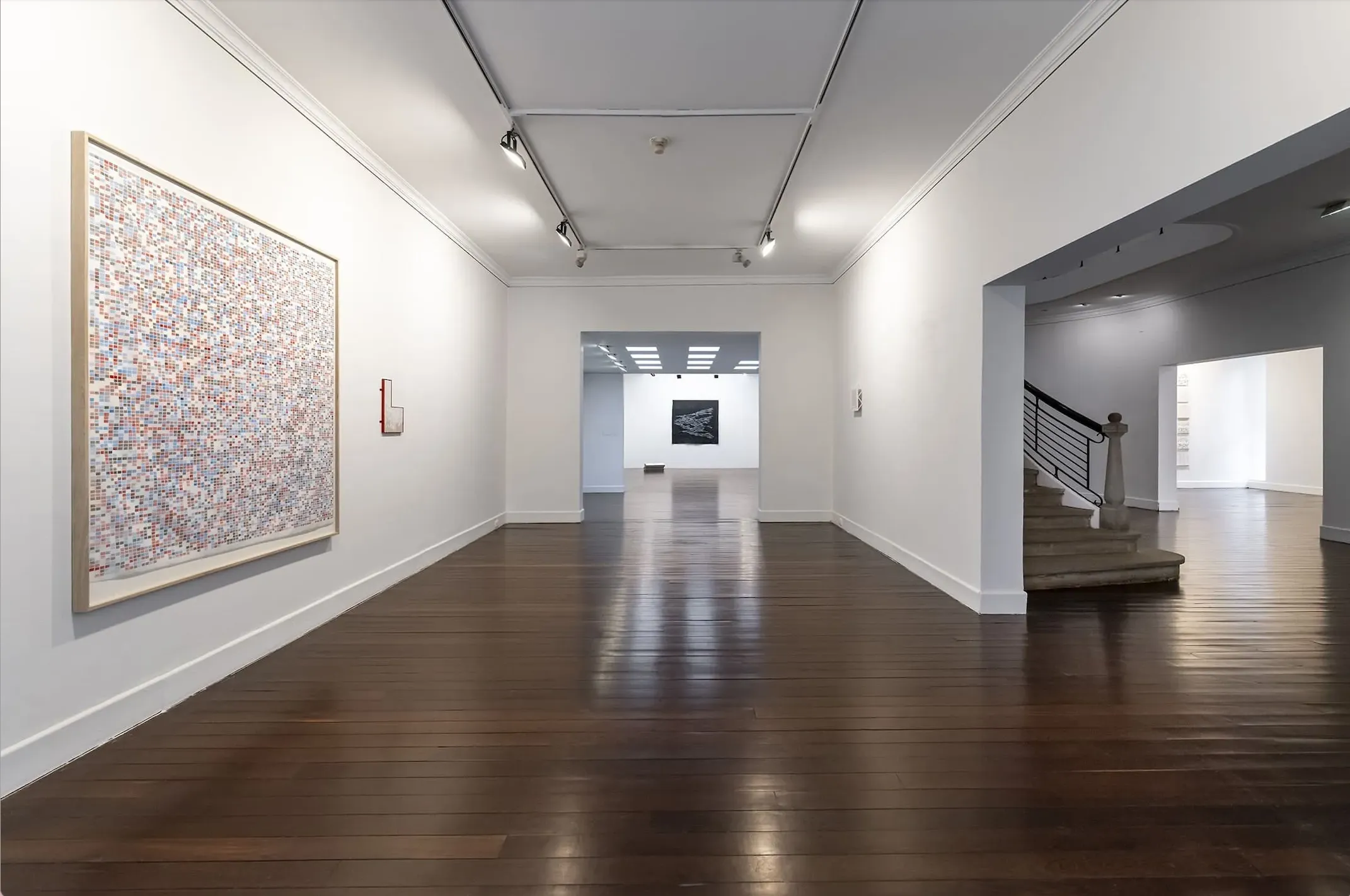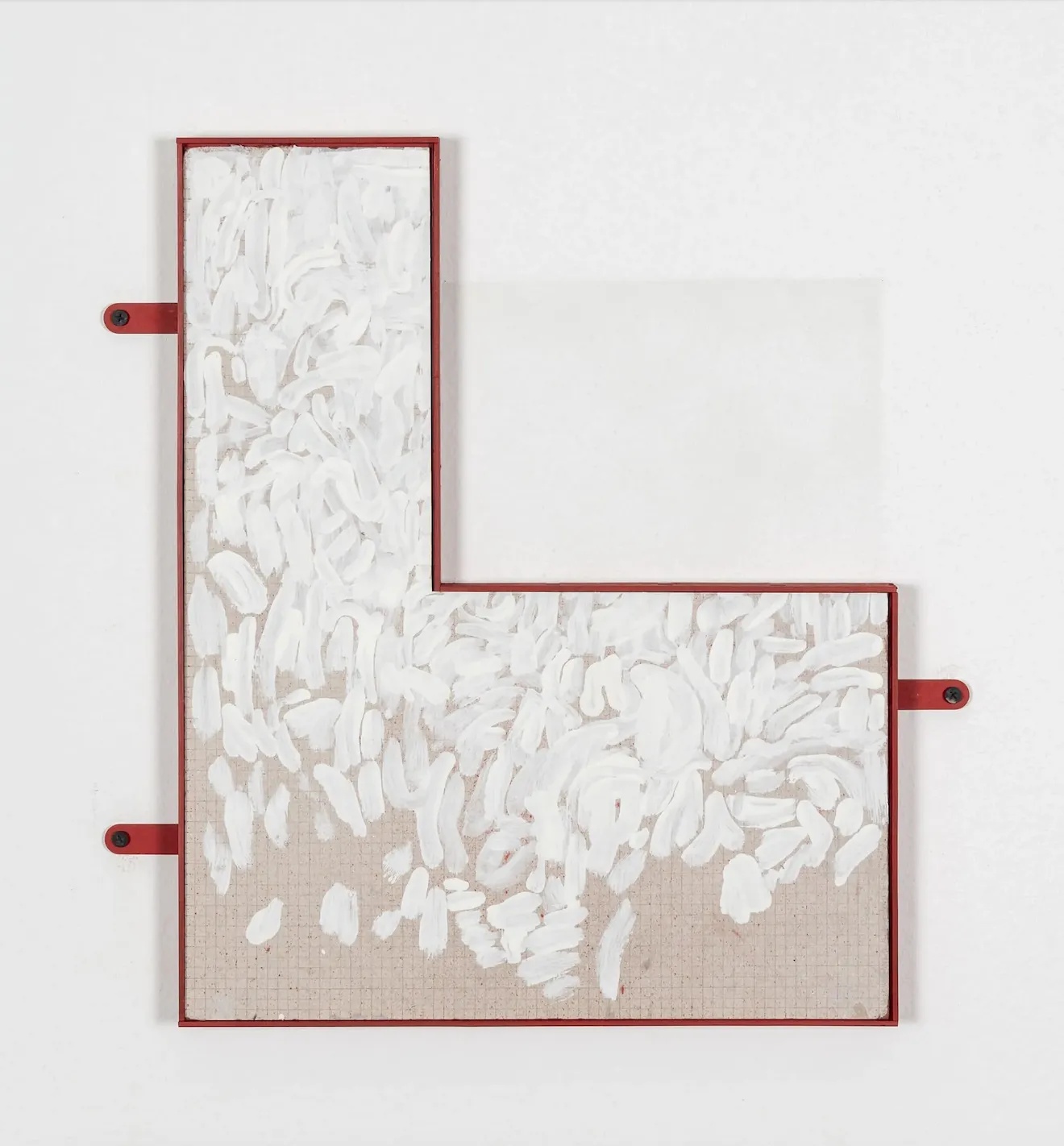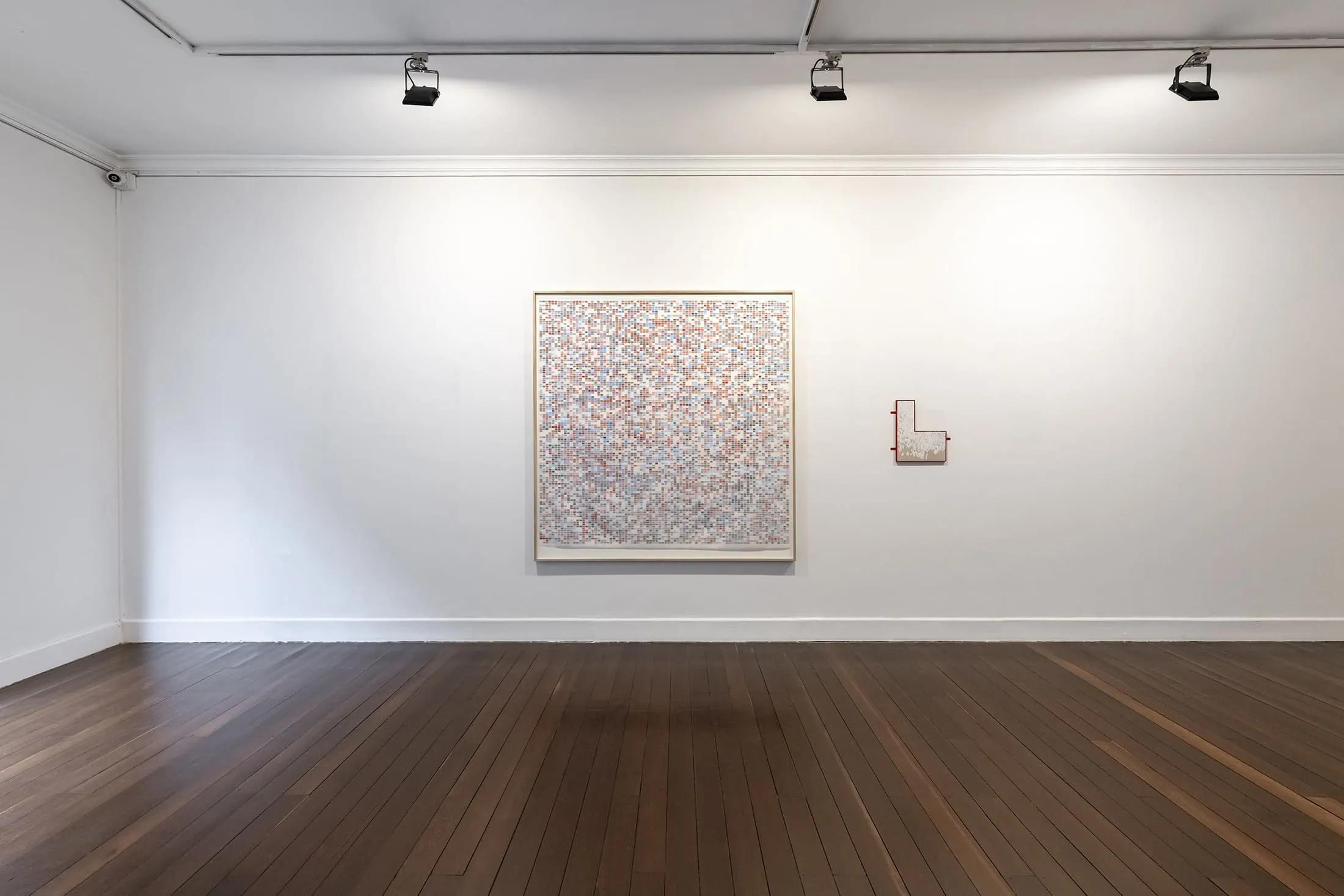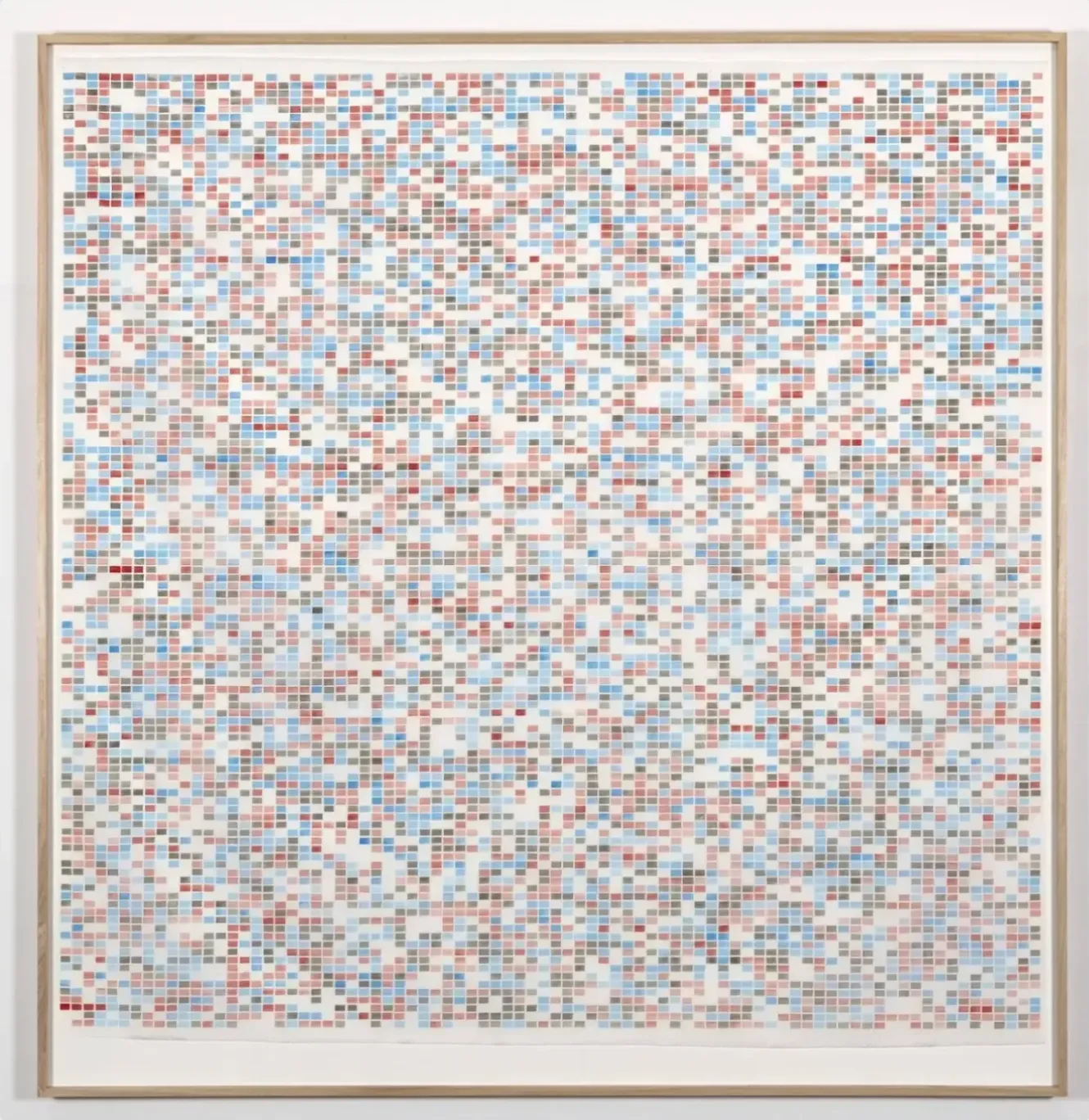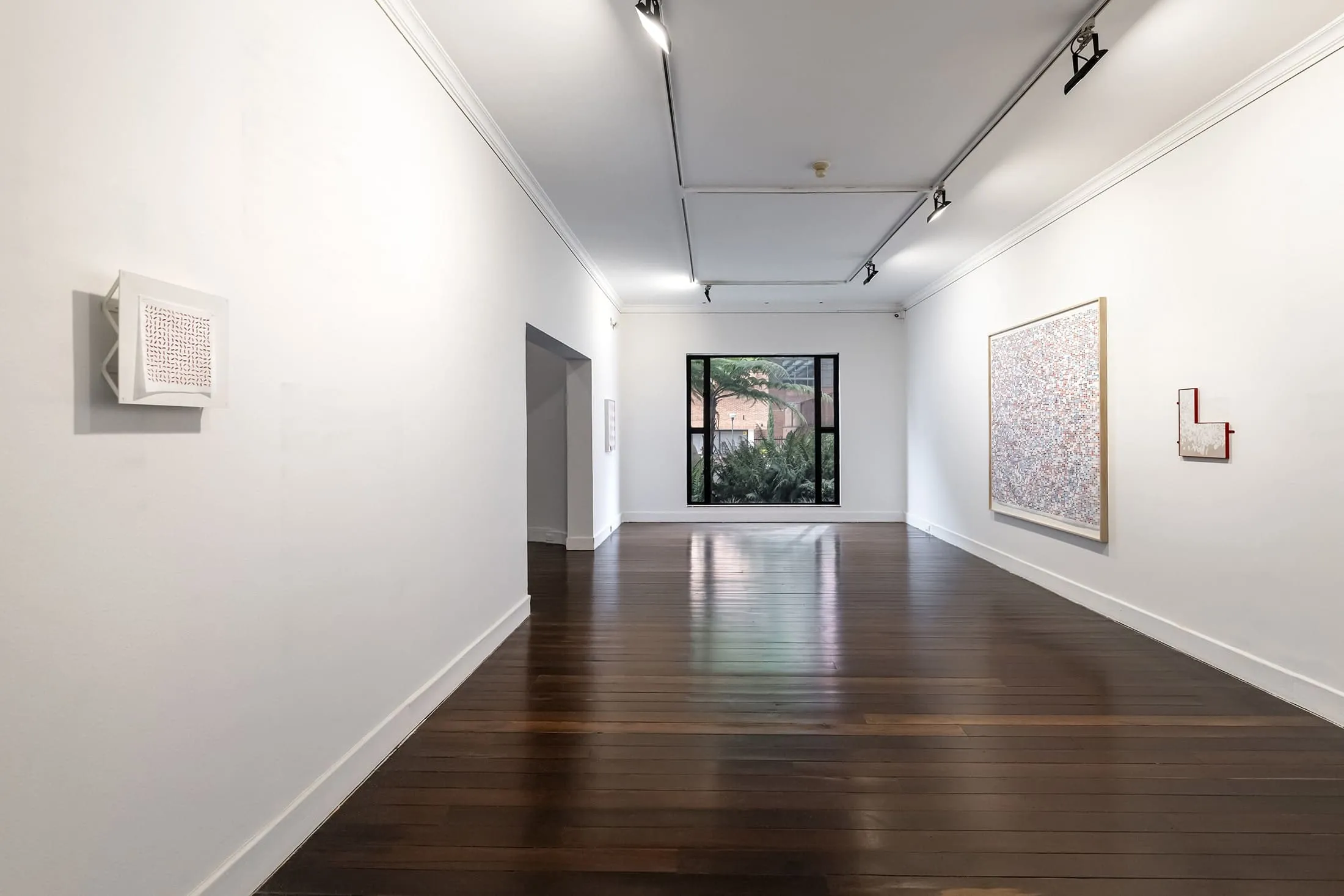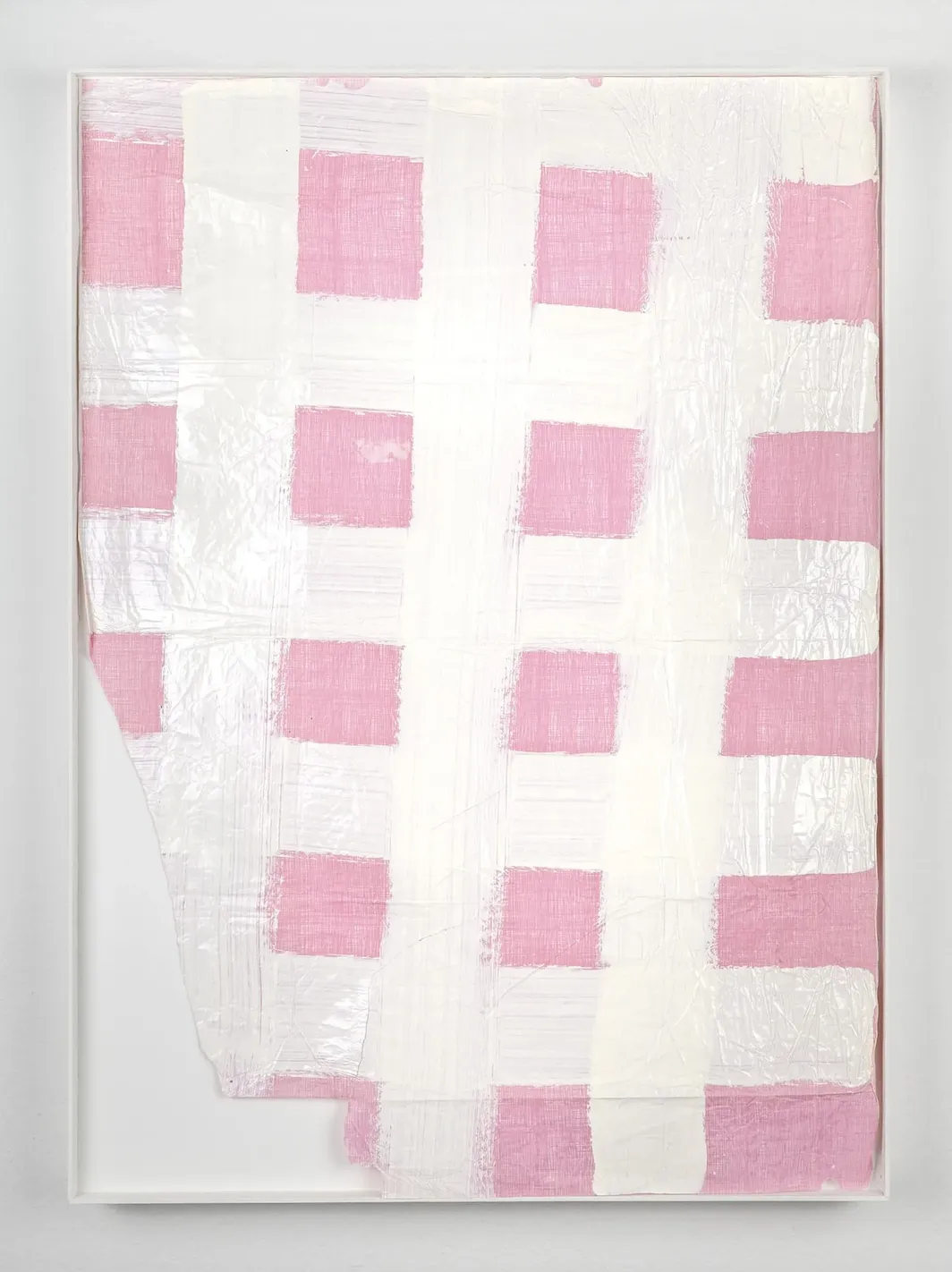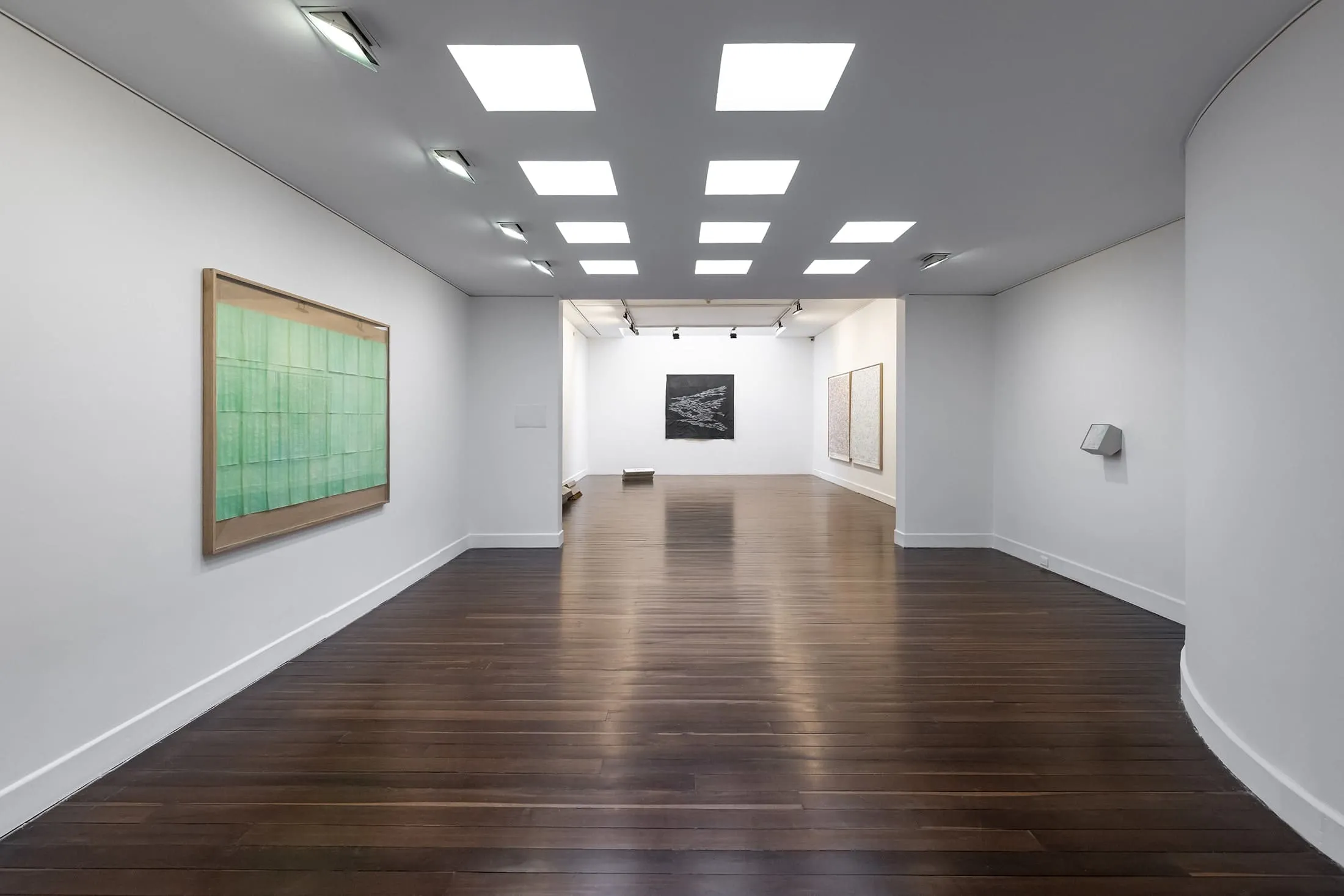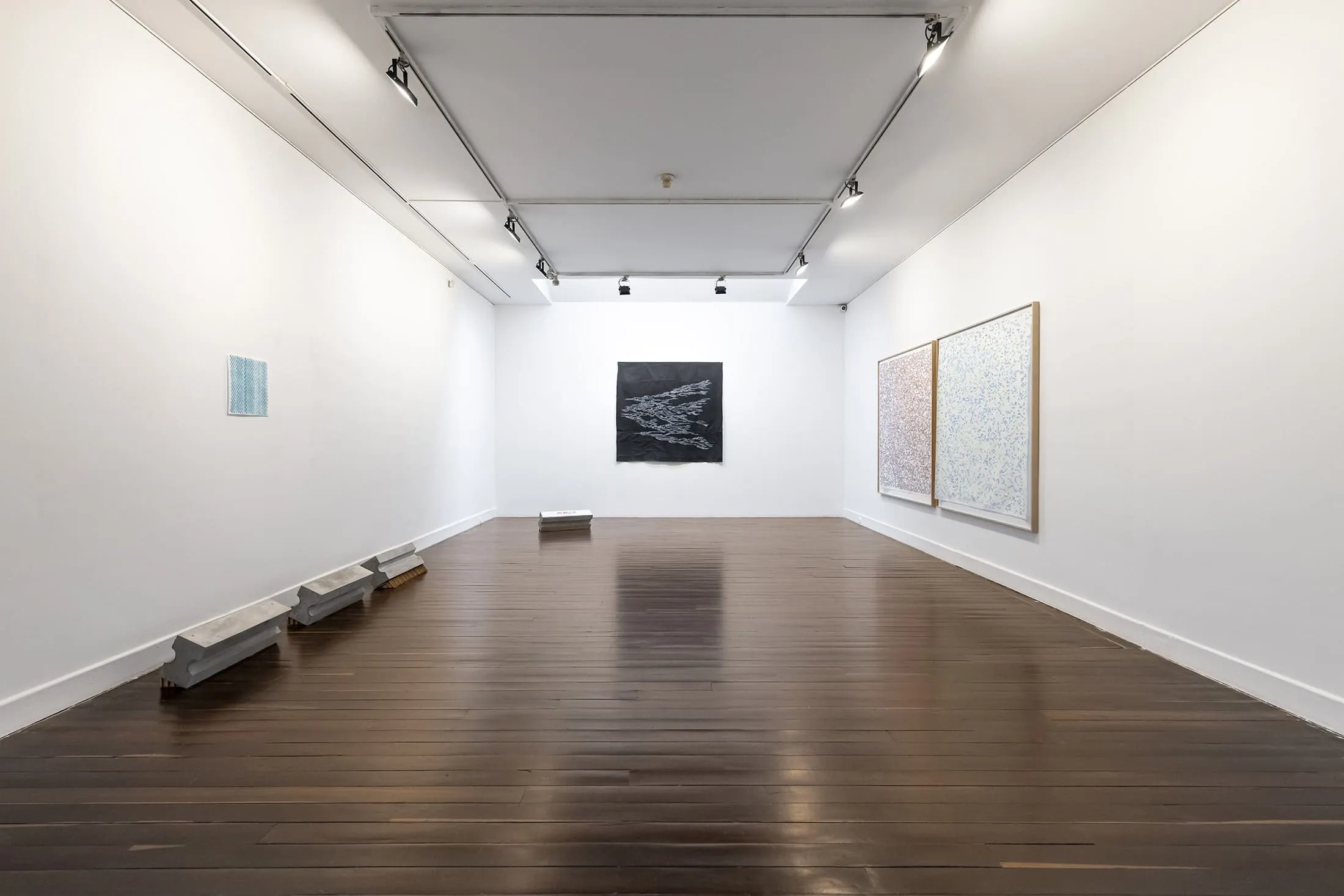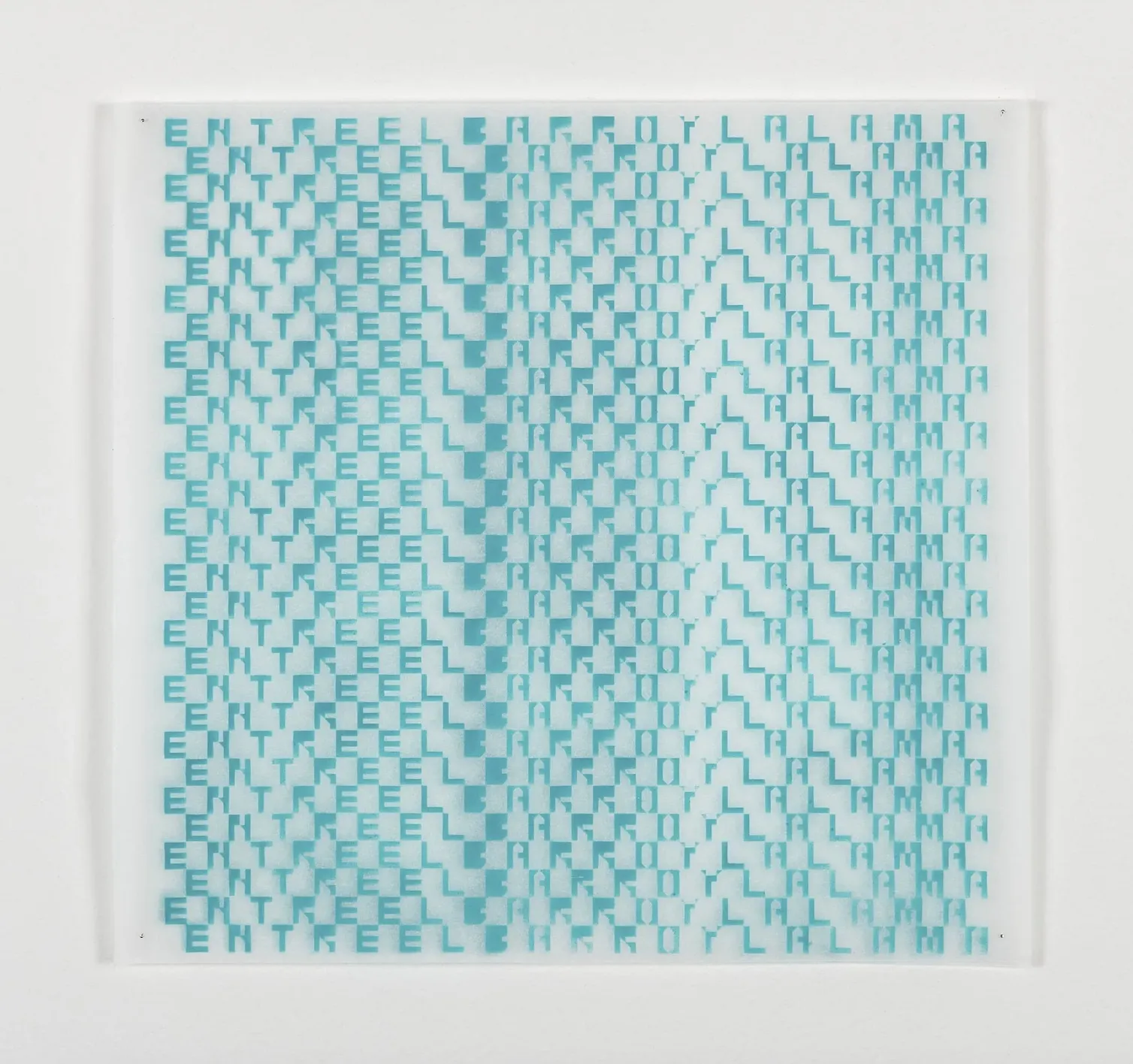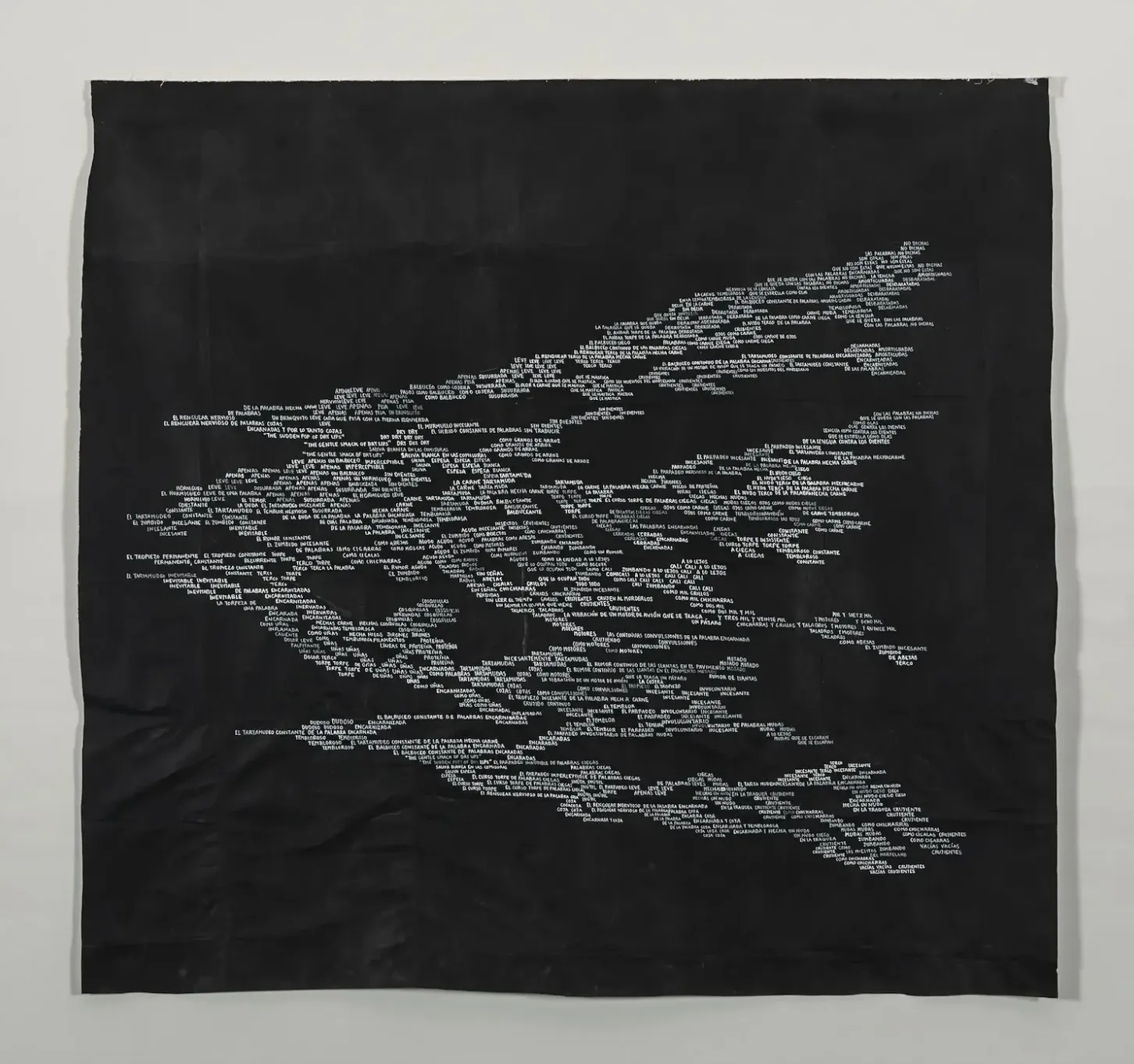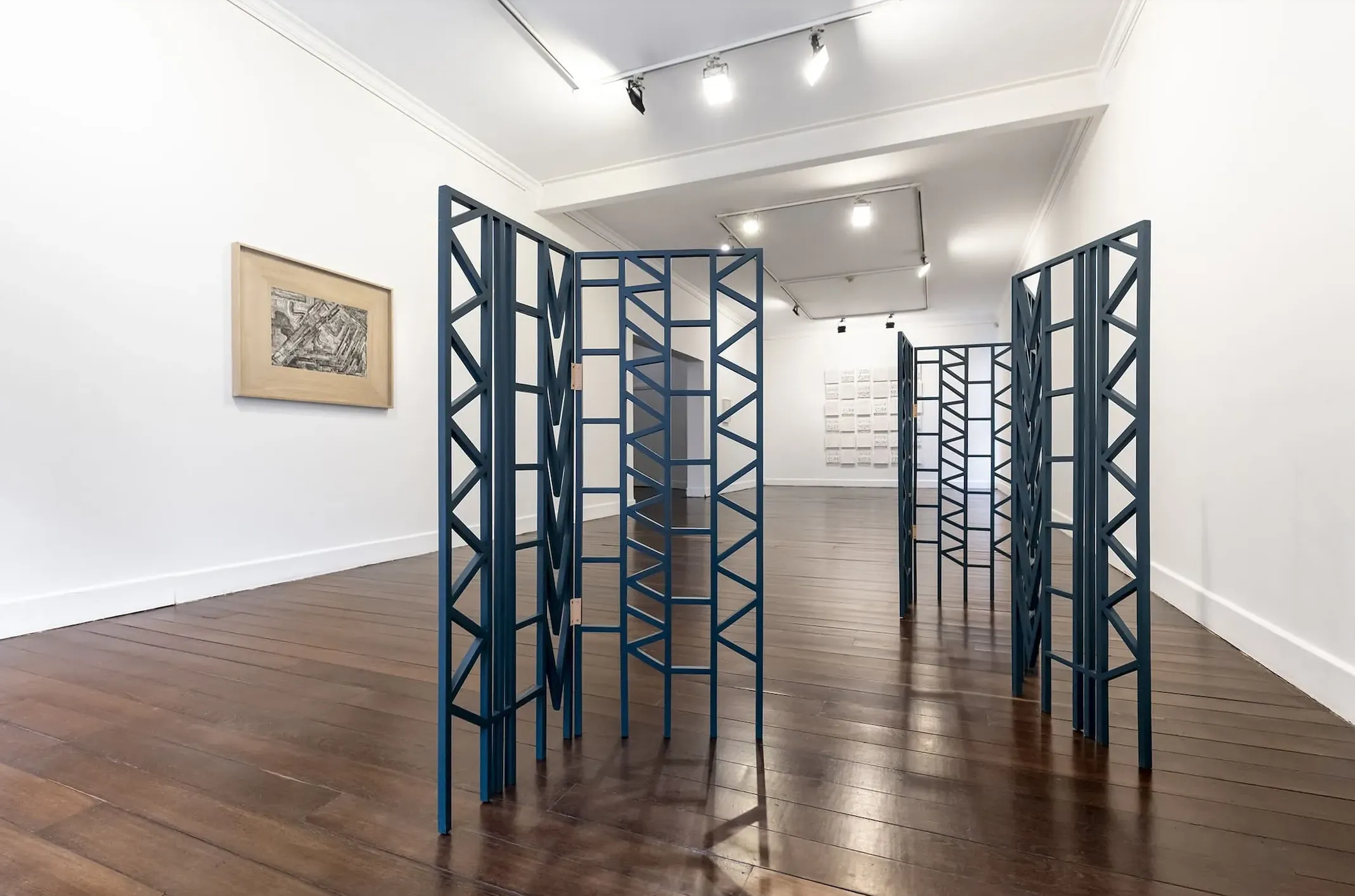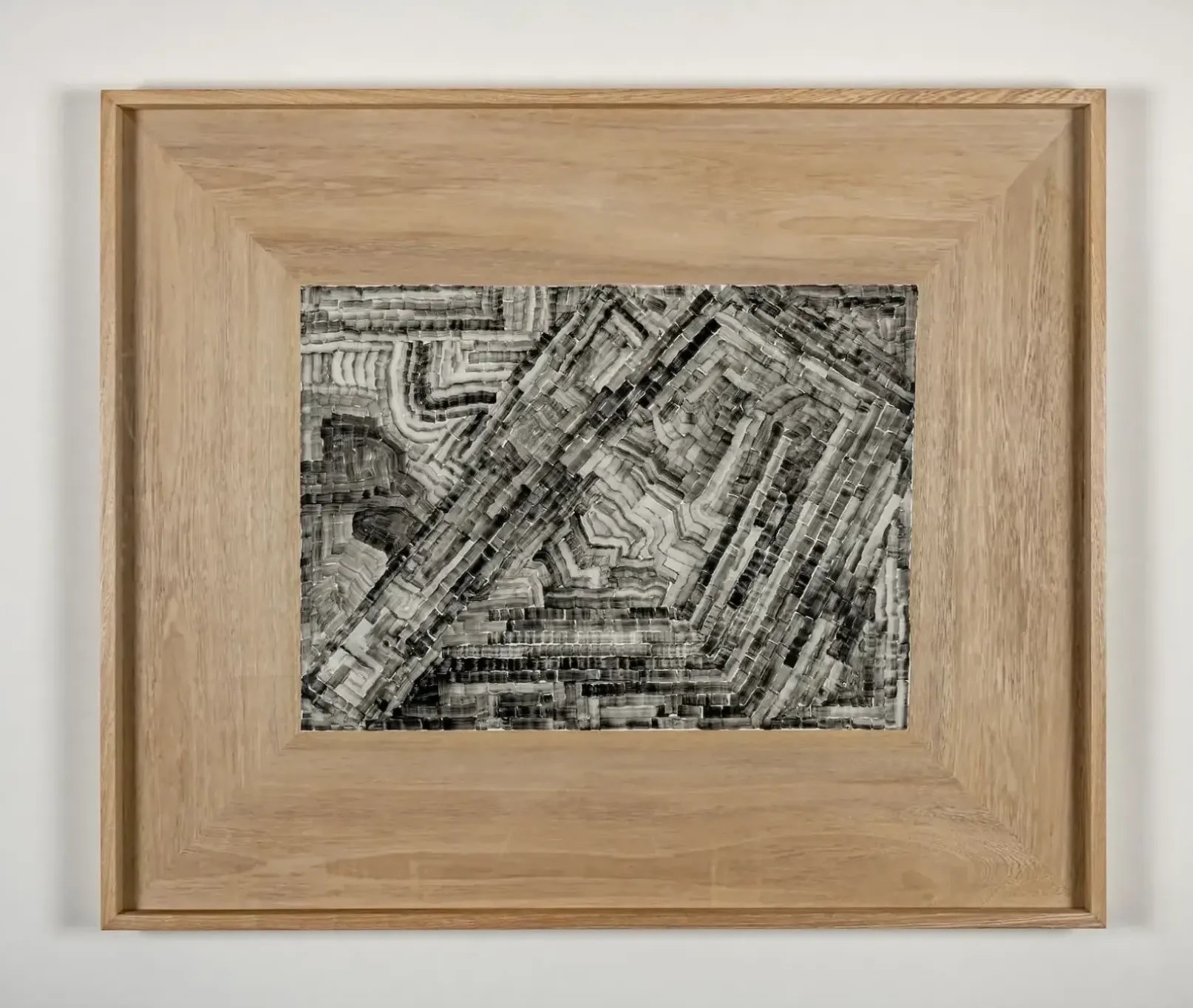Balada Tautológica
A lo largo de treinta años, Bernardo Ortiz ha configurado una práctica artística cimentada en su idea de una página. Para Ortiz, una “página” puede ser un “soporte material” o un “espacio discursivo” en el que el contenido afecta la superficie y viceversa. En Balada Tautológica, su más reciente exposición individual, dicha noción de “página” es atravesada por la idea del azar para convertirse, en palabras de Ortiz “en una antena o atractor de accidentes.” Aquí la aleatoriedad no solo opera como discurso, también como estrategia formal y material, y detonante de la disposición de las obras en el espacio expositivo. Así, las obras inéditas de Ortiz revelan y potencian dimensiones desconocidas del azar, al igual que introducen valores que suscitan lecturas renovadas del trabajo del artista.
En la construcción de Balada Tautológica—como en todas sus exposiciones— Ortiz dedica un tiempo prolongado a reconocer y habitar el espacio arquitectónico para luego dejarse llevar por la magia que allí acontece. Este modus operandi tan particular es fundamental para el artista, pues le permite concretar gran parte de las obras que conforman la muestra, partiendo de la activación sensible de lo que él denomina un “océano de lo indistinto”. Para Ortiz, lo “indistinto” es una suerte de espacio difuso que se resiste a ser definido, pero que actúa como una fuerza creativa y conectora que le otorga sentido a su trabajo.
La transformación del espacio arquitectónico inicia con unas intervenciones pictóricas sutiles en forma de ventanas que, en unísono, constituyen una suerte de exposición subyacente. Esta primera capa crea un soporte pictórico y discursivo casi imperceptible que resulta de la experiencia personal de Ortiz de observar detenidamente los frescos renacentistas pintados por Fra Angelico en las celdas del convento de San Marcos en Florencia. La relación entre los murales pintados por el monje y la arquitectura que los acoge, se convierte en una obsesión para Ortiz que luego es traducida en las huellas de pinturas inexistentes y difusas que plasma sobre las paredes de la galería.
Ortiz agrega una segunda capa simbólica a su “océano de lo indistinto” cuando instala sus dibujos en papel y tela — a veces sostenidos por marcos de madera, a veces por estructuras que provienen de la arquitectura moderna— sobre las paredes intervenidas con las huellas pictóricas descritas anteriormente. El desarrollo de los dibujos responde a la idea de que la repetición de acciones sencillas puede producir patrones complejos. Una serie de variables, como el peso del soporte, el tamaño, la cantidad de colores, los pinceles, son determinados por el flujo de números aleatorios que registran continuamente los satélites meteorológicos, y que el artista utiliza como una suerte de oráculo para tomar decisiones. Este juego, con su humor leve, implica largas horas de trabajo para hacer visible el estado de un instante particular.
Ortiz siempre ha jugado con la idea de introducir un elemento exógeno en su trabajo con el fin de explotar las posibilidades del dibujo. De ahí su interés en librarlo de su función tradicional proyectiva para convertirlo en un soporte que visibilice el error, ya que es ahí en donde no solo se revela cierta humanidad, también la presencia del artista “enfrentándose al abismo del tiempo.
”Balada Tautológica indaga sobre los cimientos conceptuales de la práctica artística de Bernardo Ortiz desde una mirada evocativa y nostálgica. Su búsqueda no solo se ve plasmada en obras cuya visualidad se resiste al lenguaje e invita a la presencia silenciosa, también se evidencia en su colaboración interdisciplinaria con el músico electrónico Julio Victoria. Un largo diálogo alrededor del sonido, el lenguaje, la repetición, y la geometría, se materializa en un vinilo con composiciones electrónicas experimentales que nacen de un impulso, de la escucha atenta de una palabra que se transforma en un ruido abstracto, de la transmisión y consiguiente resignificación.
Texto: Paula Bossa
